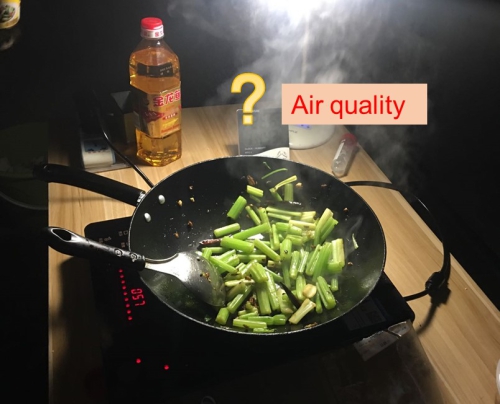Using Black Carbon as Tracer to Track Pollution from Cooking
Date:2019-08-19
Cooking organic aerosol (COA) is one of the most important primary sources of pollution in urban environments. There is growing evidence that exposure to cooking oil fumes is linked to lung cancer. Currently, the most effective method to identify and quantify COA is through positive matrix factorization of OA mass spectra from aerosol mass spectrometer measurements. However, for the widely used low mass resolution aerosol chemical speciation monitor (ACSM), it is often challenging to separate COA from traffic-related organic aerosol (HOA) due to the similarity of their unit mass resolution spectra.
Recently, Prof. SUN Yele and his team at the Institute of Atmospheric Physics, Chinese Academy of Sciences, found that black carbon (BC) is a good tracer to separate HOA and COA. By applying the BC tracer method to several datasets in megacities of Beijing and Nanjing, they found that COA contributed 15-27% to total organic aerosol in summer and even more than 10% during heating period with a significant enhancement of coal combustion emissions. COA is also an important contribution of OA in urban areas globally, on average contributing 15-20%. Their studies suggest that air quality improvements in developing countries could benefit substantially from the reduction of cooking emissions.

Stir-frying and deep-frying, features of Chinese cooking, produce high concentrations of organic aerosols. (Image by HE Yao)
"Considering that ACSM has been increasingly deployed worldwide for routine measurements of aerosol particle composition, our study might have significant implications for better source apportionment of OA and exposure studies in the future." Said Sun.
The findings have recently been published in Geophysical Research Letters.
Reference:
He, Y., Sun, Y., Wang, Q., Zhou, W., Xu, W., Zhang, Y., et al. (2019). A black carbon‐tracer method for estimating cooking organic aerosol from aerosol mass spectrometer measurements. Geophysical Research Letters, 46, 8474–8483. https://doi.org/10.1029/2019GL084092
Contact: Ms. LIN Zheng, jennylin@mail.iap.ac.cn
